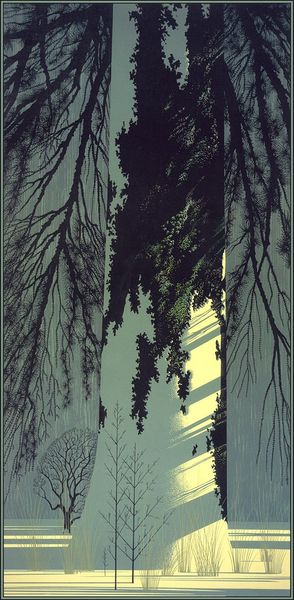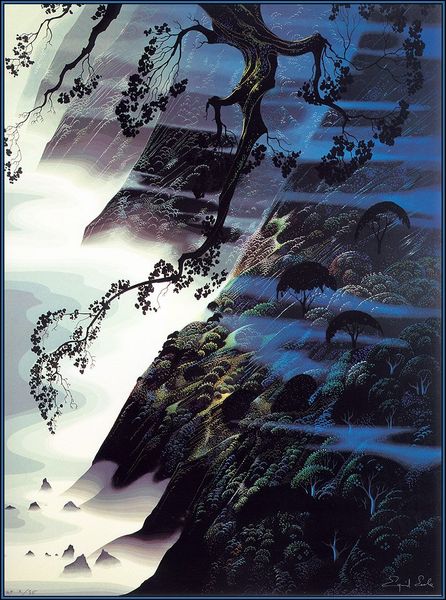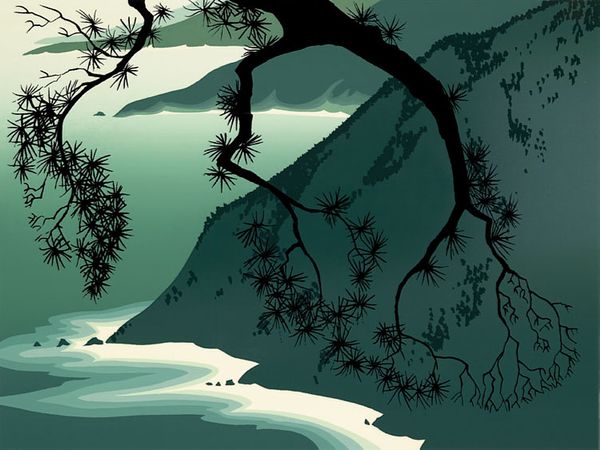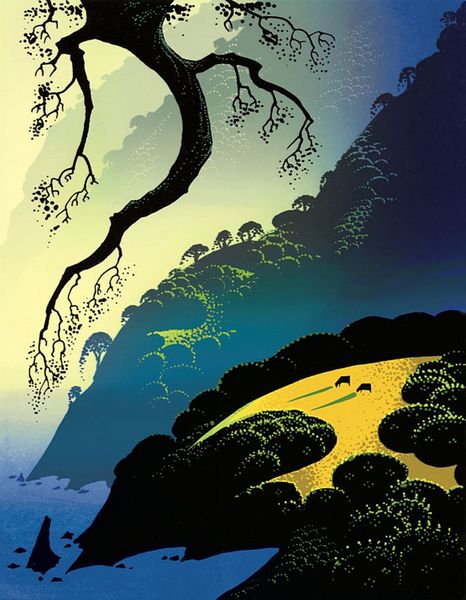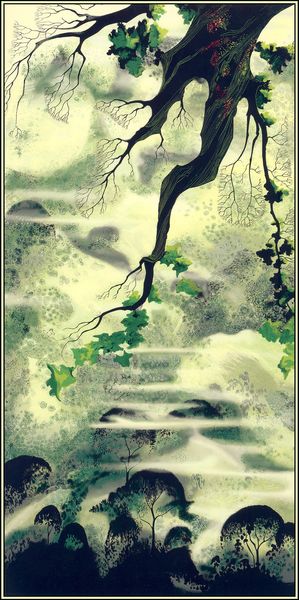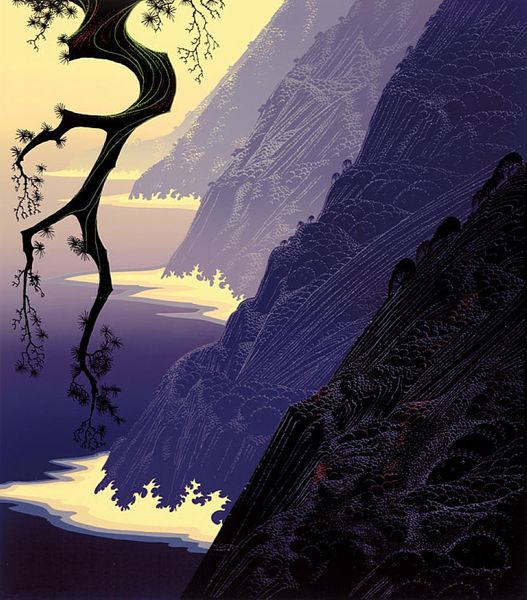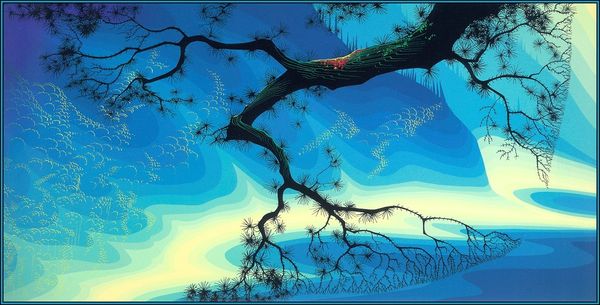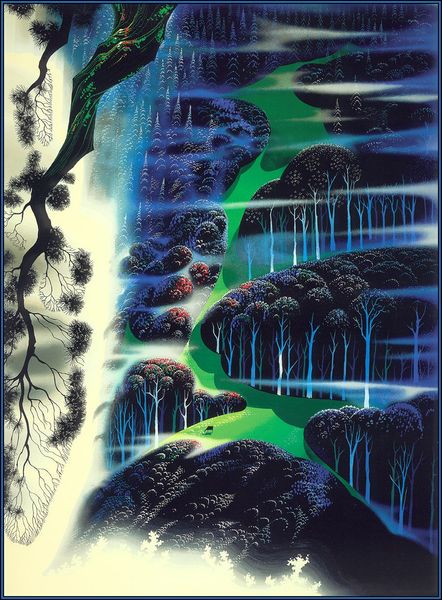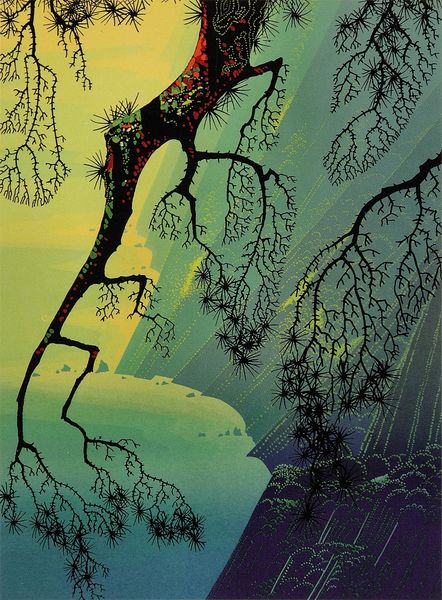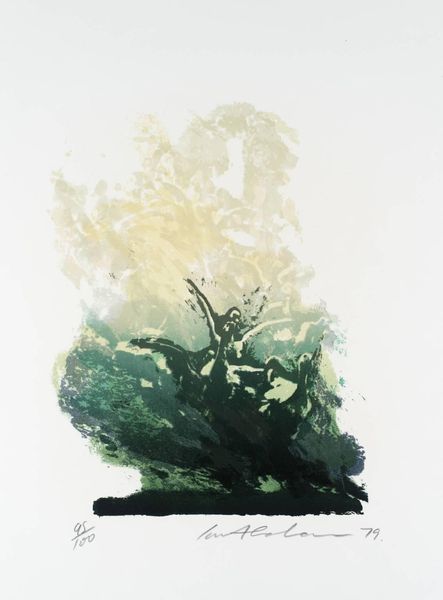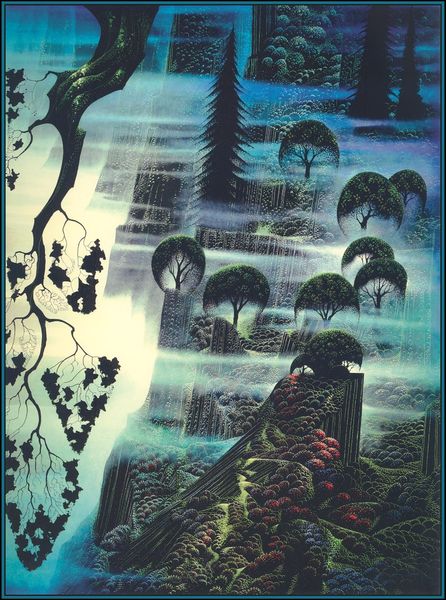
painting, watercolor
#
sky
#
painting
#
fantasy illustration
#
landscape
#
bird
#
watercolor
#
ocean
#
geometric
#
naive art
#
watercolour illustration
Copyright: Eyvind Earle,Fair Use
Curator: Let's discuss Eyvind Earle's 1991 watercolor painting, "Ocean Splash". Editor: The color palette strikes me immediately – cool blues and whites. There's a strong sense of both serenity and powerful natural force contained within the piece. Curator: Absolutely. Notice how Earle divides the composition? We have the stark diagonal of rain and the organic form of the tree branch at the upper right juxtaposed against the dynamic shapes suggesting waves and rock formations. These angular, geometric shapes, recall, perhaps unintentionally, the style of some naive art traditions. Editor: It feels deeply symbolic too, especially considering the era it was created. The fracturing landscape and implied storm bring to mind narratives around environmental threat, with a sense of something lost yet somehow retaining beauty in its fragmentation. Do you agree with this tension? Curator: Undoubtedly. The strategic placement of black rock forms interspersed among the teal washes establishes a kind of visual rhythm but offers a kind of pictorial obstacle—something interfering with the wash of color. Editor: Also, Earle gives agency to nature itself, allowing for speculation on his intended emphasis regarding climate discourse in the early nineties, considering increased ecological concerns then becoming widespread in popular awareness. Curator: His ability to distill complex subjects into seemingly simplified forms reflects his meticulous technical command; though, again, this risks obscuring any direct attempt to take on ecological politics. But, the visual evidence speaks to it for sure, right? Editor: Certainly. It also makes you consider who benefits from idealized landscapes if those views remain abstract to those suffering immediate, often class-based consequences during this same time. Curator: Food for thought. Viewing the work through formalism gives clarity as to composition and structure, whereas assessing within political climate and theory prompts thought as to whom these depictions aim towards when faced with questions around power and politics. Editor: Precisely. Thinking about it makes for great dialogue between the object itself and all of our surrounding conditions.
Comments
No comments
Be the first to comment and join the conversation on the ultimate creative platform.
